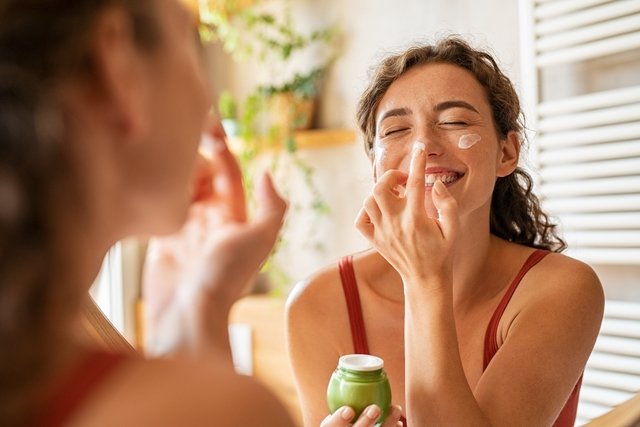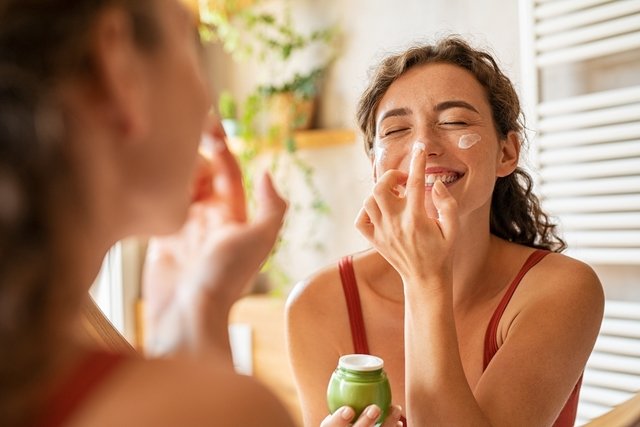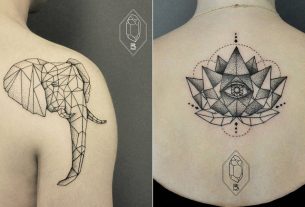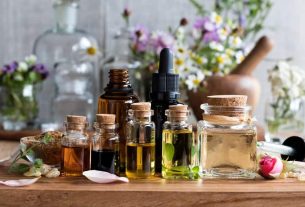To get rid of pimples, you should wash your face daily, apply an astringent lotion, moisturize your skin, exfoliate and eat an anti-inflammatory diet, as they help reduce skin oil, remove impurities or unclog pores.
Furthermore, to control the appearance and treat pimples, it is important to avoid makeup, especially makeup that is not oil freesun exposure and stress, apply sunscreen adapted to your skin type, and do not squeeze pimples so that the skin does not become blemished or scarred.
In cases where the skin is very oily and many pimples appear, you can have a deep skin cleansing with a beauty professional, in addition to consulting a dermatologist to recommend the best treatment for the pimples.

10 ways to get rid of pimples
Some ways to eliminate pimples are:
1. Wash your face daily
Washing your face daily is essential to remove excess fat that accumulates on the skin, reducing oiliness and helping to prevent the appearance of pimples.
Therefore, it is recommended to wash your face twice a day (morning and evening) with running water and a facial soap, cleansing lotion or soap suitable for acne-prone skin, using gentle circular movements.
It is important to be careful not to wash your face more than twice a day, as this can dry out the skin and cause more oil to be produced to compensate for the dryness and lead to the appearance of pimples.
2. Apply an astringent facial toner
Applying an astringent facial toner helps remove impurities from the skin and unclogs pores, controlling skin oil, helping to get rid of pimples or prevent the appearance of others.
The astringent facial toner can be used to complement face washing, removing impurities that soap cannot eliminate, and should be used by applying a few drops of the toner to a cotton ball or disc and gently rubbing it over the face in circular movements. No need to rinse.
Generally, astringent tonics contain alcohol and substances such as salicylic acid, calendula, tea tree oil or Aloe verafor example, and should preferably be recommended by a dermatologist, according to the characteristics of the skin.
3. Moisturize your skin
It is very important to hydrate the skin after cleansing and applying the astringent toner, with a specific cream for oily skin that limits excess sebum production, which causes new pimples.
A cream can also be applied that has components that promote chemical exfoliation throughout the day, in order to smooth the skin and reduce pores, or even with anti-inflammatory action to reduce the appearance of pimples.
A product that dries and disguises pimples, rich in keratolytic, anti-seborrheic and antibacterial agents, can also be applied locally.
4. Apply a pimple drying gel
Applying a pimple drying gel helps reduce the inflammation, redness and size of pimples, eliminating them more quickly.
These drying gels typically contain salicylic acid, Aloe vera or bisabolol in its composition, for example, and should be applied directly to the pimples on the skin, once a day, after washing the face.
5. Apply sunscreen daily
Applying non-greasy sunscreen daily is important as it helps control skin oiliness, as well as preventing blemishes that may appear due to pimples.
Therefore, it is recommended to apply sunscreen with at least SPF 30, at least 15 minutes before leaving home, and even on cloudy days. Furthermore, it must be reapplied every two hours, and immediately after sweating or sporting activities, such as swimming, for example.
The ideal is to consult a dermatologist who can recommend the best type of sunscreen according to your skin type.
6. Exfoliate your skin
Exfoliating your skin 1 to 2 times a week helps unclog pores and keep your skin healthier and cleaner, which helps eliminate pimples more quickly and prevent new pimples from appearing.
This is because the ingredients in exfoliants stimulate blood circulation, clean pores, eliminate dead skin cells and stimulate cell renewal.
Exfoliants can be either physical, containing small granules or microspheres, such as silica or polyethylene, or chemical, containing substances such as acetylsalicylic acid, glycolic acid, lactic acid, pyruvic acid or alpha hydroxy acids, and must be used under the guidance of a dermatologist because they can cause skin irritation.
7. Apply a purifying mask
Applying a purifying clay-based mask at least once a week, for example, helps remove impurities and excess oil from the skin, which can help eliminate pimples more quickly.
These masks can be found in pharmacies or drugstores, and some may contain sulfur in their composition, which enhances the cleansing effect on the skin.
To use the purifying clay mask, you must follow the manufacturer’s instructions, and it is generally recommended to apply it to the skin of the face for 10 to 15 minutes and then rinse. After use, a non-greasy moisturizing cream should be applied, as the skin may become dry.
Soaps, toners, lotions and masks can be purchased at the pharmacy or supermarkets. However, some home remedies can also be made at home, such as a solution with burdock root, for example. See how to make this home remedy for pimples.
8. Deep clean your skin
Deep skin cleansing helps remove skin impurities and dead cells, as well as stimulating cell regeneration and leaving the skin looking more beautiful and healthier.
Generally, it is recommended to deep clean your skin once a month for combination and oily skin or every 2 months for normal to dry skin. See how to deep clean your skin.
Deep skin cleansing can be done at home or in beauty clinics, and although it helps to combat pimples, it should not be done when there are inflamed pimples. This is because as a deeper exfoliation is carried out and more specific products are used, inflammation may worsen.
9. Peeling chemical
O peeling Chemical is an aesthetic treatment that can also be carried out to reduce scars left by acne and consists of applying acids with the aim of promoting cell renewal and eliminating dead cells, improving the appearance of the skin.
Before carrying out this treatment, it is important that the dermatologist is consulted so that the skin can be assessed and the best product to be applied and in what concentration can be verified to obtain the best result. It is important that the peeling be carried out when there are no signs of inflammation on the skin.
10. Have a healthy diet
Food can directly interfere with sebum production and, consequently, increase the number of pimples.
Therefore, it is important to have a diet rich in foods capable of reducing skin inflammation, and it is recommended to increase consumption of the following foods:
- Fish, chia seeds and walnuts rich in omega 3which helps control inflammation of sebaceous follicles;
- Oysters and sunflower seedswhich contain zinc, which is important for reducing inflammation, improving healing and reducing the secretion of fat by the skin;
- Fruits and vegetables rich in antioxidantswhich strengthen the body and help fight skin inflammation;
- Waterimportant for hydrating the skin, and it is recommended to drink at least 1.5 liters per day.
It is also important to observe whether the consumption of a certain food increases the number of pimples, as this way it is possible to reduce or avoid the consumption of that food.
Some people report that the consumption of chocolate, peanuts, dairy products or protein supplements increases pimples, and therefore it is recommended to avoid consuming this type of food. See more details on what to eat to treat pimples.
Check out the video below for more tips on what to eat to get rid of pimples:
When to go to the dermatologist
It is recommended to consult a dermatologist when the pimples do not improve within a few weeks, they appear frequently or the pimples cause spots or scars on the skin.
In this way, the doctor may recommend treatment with:
- Gels or lotions containing retinoic acid, salicylic acid or adapalene and benzoyl peroxide;
- Antibiotics in the form of creams or tablets, such as tetracycline, minocycline or clindamycin;
- Isotretinoin in the form of tablets.
As acne is also caused by hormonal changes, sometimes the use of contraceptives, or treating health problems such as polycystic ovaries or fibroids, are important in eliminating blackheads and pimples. Learn more about acne remedies.
In addition, other treatments may also be recommended by the dermatologist, such as radiofrequency, phototherapy, laser or microabrasion, for example.
Taking care of your health has never been easier!

Sign up for our newsletter and stay up to date with exclusive news
that can transform your routine!
Warning: Undefined array key "title" in /home/storelat/public_html/wp-content/plugins/link-whisper-premium/templates/frontend/related-posts.php on line 12
Warning: Undefined array key "title_tag" in /home/storelat/public_html/wp-content/plugins/link-whisper-premium/templates/frontend/related-posts.php on line 13




